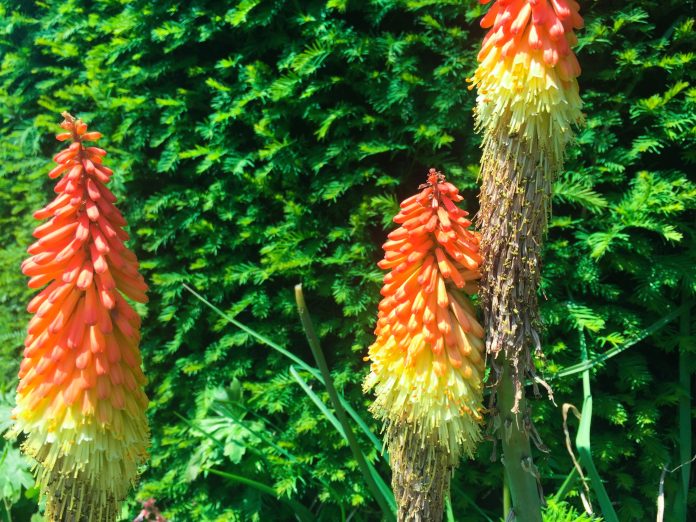Kniphofia Grow Guide
Kniphofia, commonly known as Red Hot Poker, is a striking perennial known for its tall, torch-like flower spikes in shades of red, orange, yellow, and cream. These sun-loving plants add a dramatic vertical element to gardens and are attractive to pollinators.
Classification
- Kingdom: Plantae
- Clade: Angiosperms
- Order: Asparagales
- Family: Asphodelaceae
- Genus: Kniphofia
Choosing the Right Kniphofia
There are many species and cultivars of Kniphofia, varying in height, flower color, and bloom time:
- Kniphofia uvaria – A classic variety with tall, red-to-orange flowers.
- Kniphofia ‘Lemon Popsicle’ – A compact variety with bright yellow blooms.
- Kniphofia ‘Tawny King’ – Produces apricot and cream-colored flowers.
- Kniphofia caulescens – Known for its bluish-green foliage and striking flower spikes.
Planting
- Location: Kniphofia thrives in full sun and benefits from a sheltered position.
- Soil: Prefers well-drained, fertile soil; tolerates sandy and loamy soils but dislikes heavy clay unless well-amended.
- Hardiness: Hardy in USDA zones 5-9, depending on the variety.
- Flowering Months: Blooms from late spring to early autumn (June-September).
- Planting Time: Best planted in spring or autumn.
- Spacing: Space plants 60-90 cm apart, depending on the variety.
Care and Maintenance
- Watering: Moderate water needs; drought-tolerant once established but benefits from occasional deep watering.
- Mulching: Apply mulch in autumn to protect the roots in colder climates.
- Feeding: Use a balanced, slow-release fertilizer in spring to encourage strong growth.
- Pruning: Deadhead spent flowers to encourage continuous blooming. In late autumn, cut back old foliage to tidy up the plant.
Common Problems
- Crown Rot: Can occur in poorly drained soils; ensure good drainage.
- Slug and Snail Damage: Young shoots may be vulnerable; use organic deterrents.
- Rust and Leaf Spot: Fungal diseases can be prevented with good air circulation.
Propagation
- Division: Divide mature clumps every 3-5 years in early spring or autumn.
- Seed: Can be grown from seed, but hybrids may not come true.
Popular Uses
- Ideal for mixed borders and coastal gardens.
- Pairs well with grasses and drought-tolerant perennials.
- Excellent for attracting bees and butterflies.
With minimal care, Kniphofia provides long-lasting color and a unique architectural presence in the garden, making it a standout feature in any sunny landscape.




